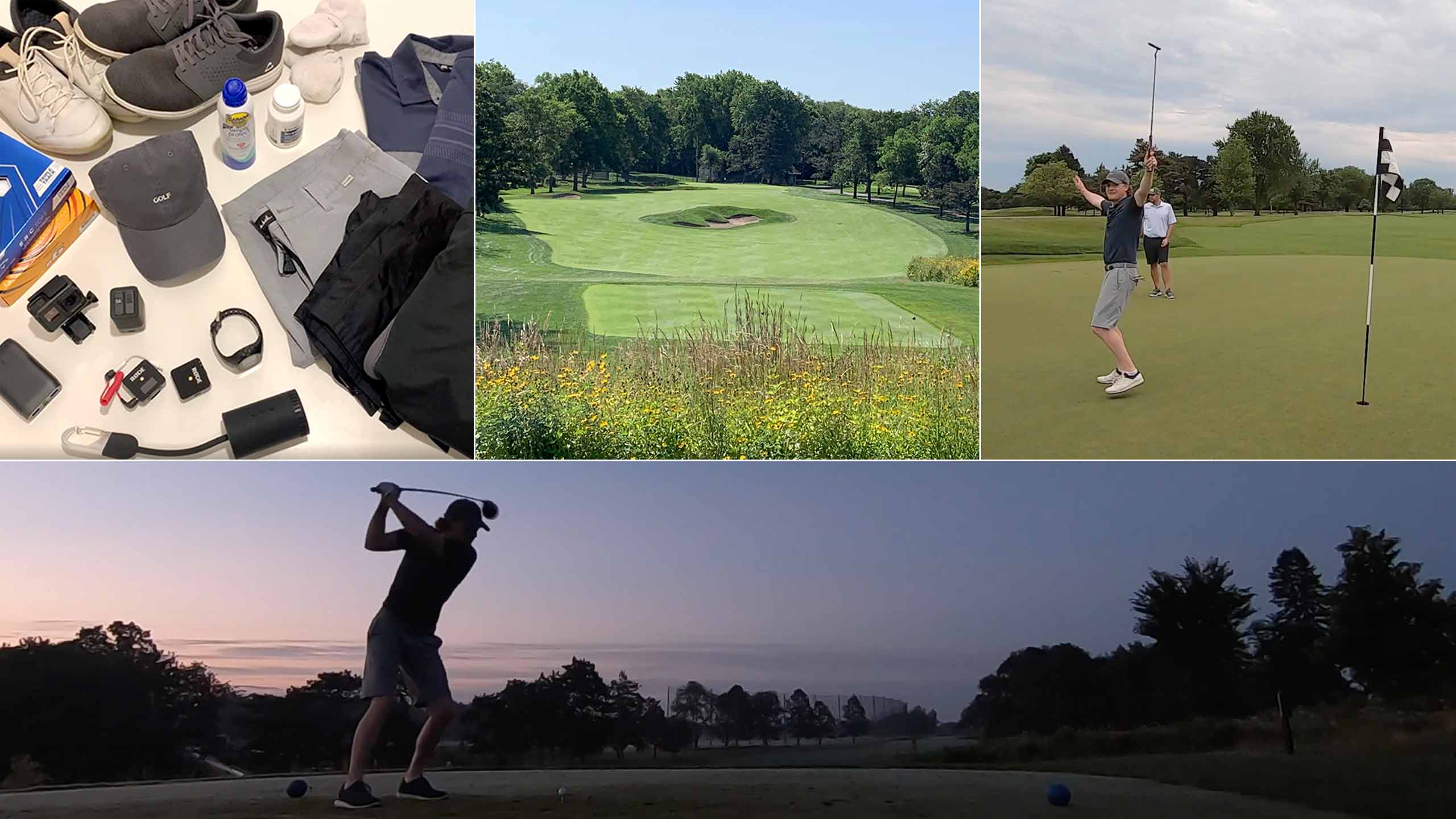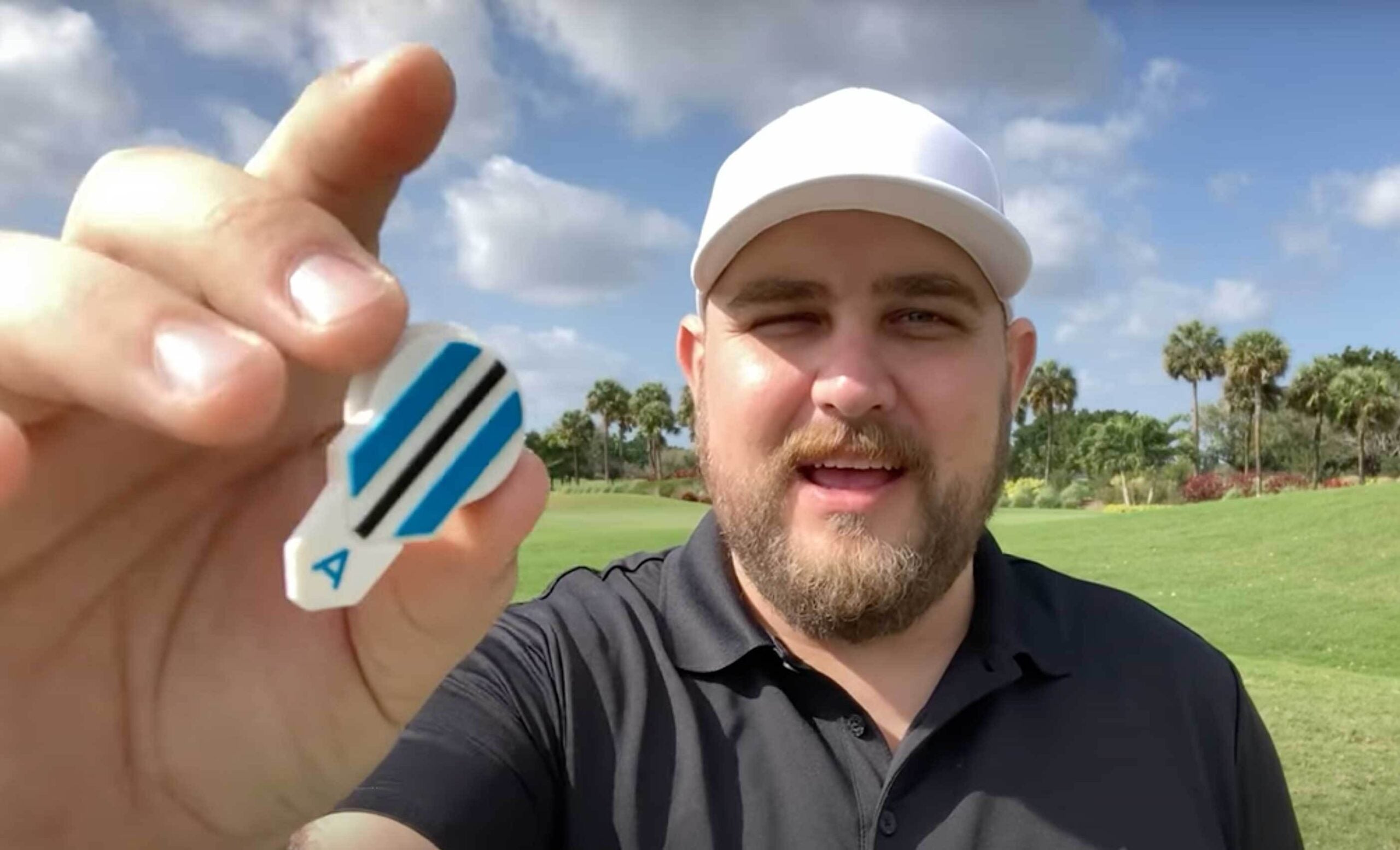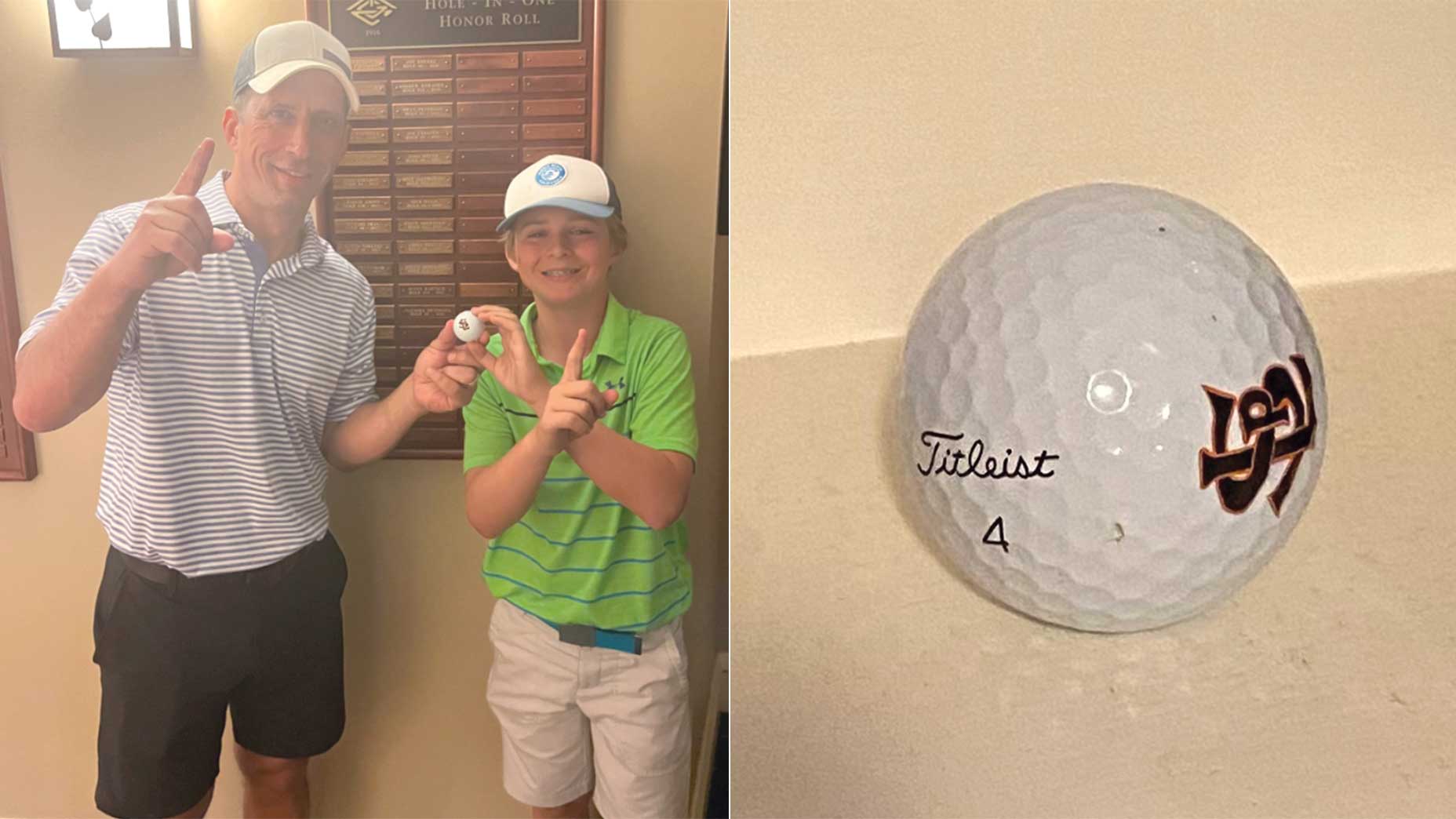It was 4:12 a.m. when I parked the car, shut off the ignition and popped the trunk to gather my gear. I was barely four steps away from the trusty Honda when I stopped, set my bag down and turned back. I opened the door and reached into the center console to snatch the Ibuprofen I most certainly would not want to forget. When playing 100 holes of golf in one day, pain relief (in any form) is more important than extra golf balls or socks.
So, what’s it like playing 100 holes of golf in one day, and why the heck would any sane person do such a thing? I wondered that too, so I registered in Birdies4Brains’ flagship fundraiser, a 100-holes-a-day marathon on June 28 at Keller Golf Course in Maplewood, Minn.
More importantly, what did this 16-handicap learn? That a balky putter over 5 1/2 rounds of golf will drive you mad, that headcovers are an absolute nuisance when taking 500 swings a day, and that great golf communities, people and causes are everywhere … so long as you’re willing to do the legwork to find them.
* * * * * *
June 28, 2021
Keller Golf Course, Maplewood, Minn.
The first tee time for the shotgun start was 4:59 a.m. When golfers registered that morning they received their starting hole assignments for each round. Each player had their own cart and groups played in threesomes. The goal was to play each round in less than 2 hours, 15 minutes, which would allow for a 15-20 minute break before the next round started. This schedule, if kept on track, would allow groups to finish around 6 p.m. or so. And if there was a rain delay (there was!) there would still be enough of a buffer to get 100 holes in before dark. Ready golf wasn’t encouraged — ready golf was the law.
I was nervous. There were lots of questions: How fast do I need to play? Do I have time for practice swings? What about reading putts? Should I keep score? And, the worst one: What if I get the shanks, inexplicably struggle to advance the ball, hold up my group, slow down the group behind me, their hands on their hips in the classic annoyed-golfer pose, nix the chances of everyone playing 100 holes in a day and literally ruin the entire event?!
Luckily, my anxiety eased pretty quickly. I started on the 1st hole, and the whole day was fast-paced and low-key. You could keep score. You could (quickly!) read a putt. You could play a game within your group. You could have an adult beverage. It was a blast. But events like this don’t just appear out of thin air.
Meet Birdies4Brains
Birdies4Brains is a non-profit organization founded by Minnesota native Brian Eder, who years ago began using the Summer solstice as an excuse to play golf all day with his buddies. After five or six years, the group realized there was an opportunity to parlay it into something that would serve others. Brian was already familiar with the brain-injury community since his sister, Christine, suffered a brain aneurysm in 2009, so he decided that would be their mission. In 2011, Birdies4Brains was born.
This was the 9th year of the 100-holes-a-day fundraiser — the foundation’s flagship event that golfers need to raise at least $2,000 to gain entry to — but two more events have been added in the years since, a scramble and a gala. This year the organization is projected to raise its millionth dollar. For assistance, people can nominate friends and loved ones through the foundation’s official website. In order to attract worthy candidates, Birdies4Brains’ nine-member board vets each applicant. Their gifts are tailored, helping with things like wheelchair-accessible vans, retrofitted houses, medical bills, therapy or mortgage payments.
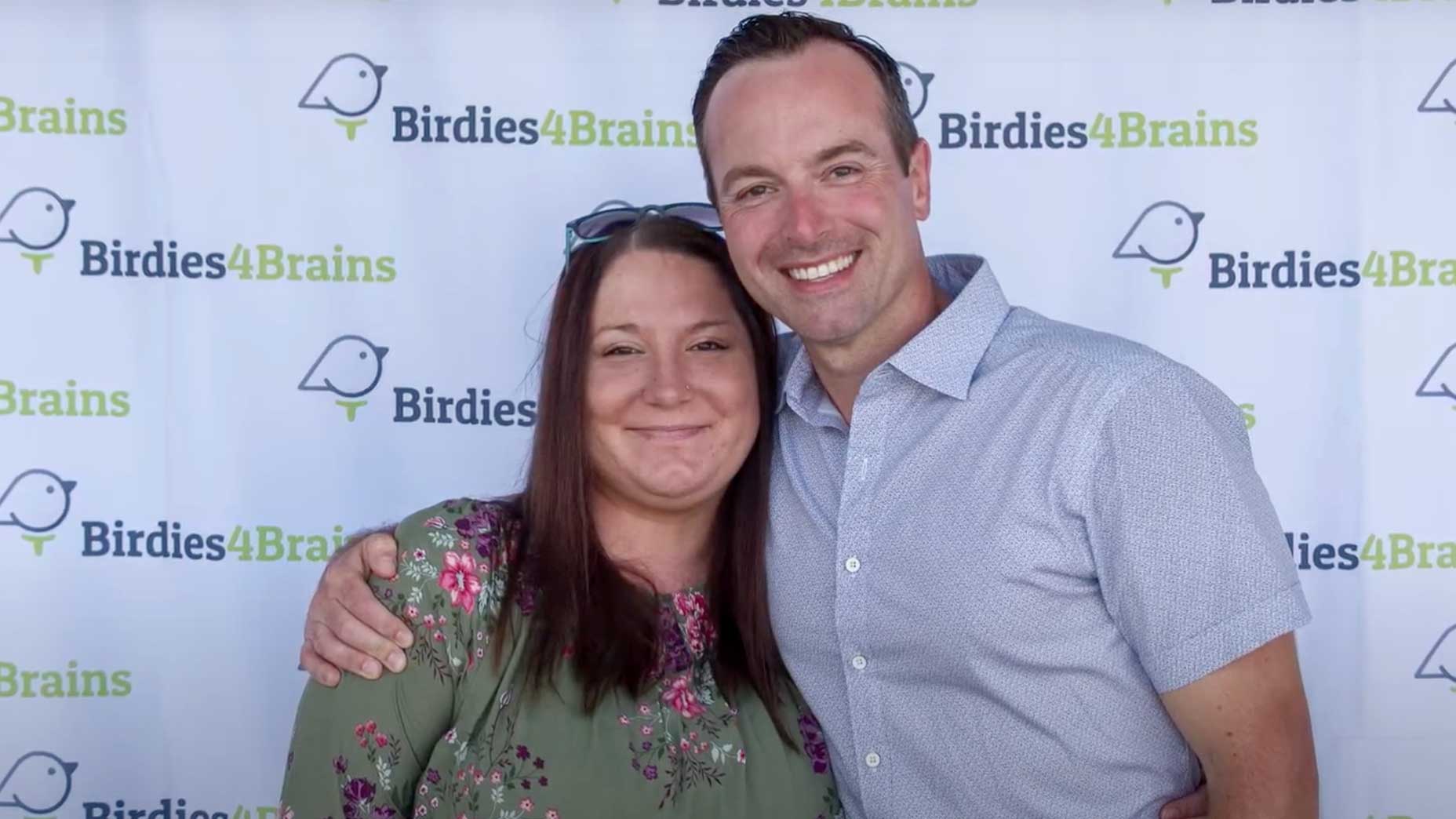
“Really what it’s all about is making the gifts,” says Eder, who says his sister is about 99 percent recovered. “When you are able to deliver for somebody who is in a bad spot, it’s an amazing feeling. And because it is so tailored and personal, you are stepping into these peoples’ lives at a really vulnerable time and you are there to help, which is a really cool feeling and a really serious responsibility.”
But why 100 holes in one day?
“I have played in enough seven-hour scrambles where it becomes a slog, and then also it becomes more about the activities and less about the fundraising,” Eder says. “But this is almost the reward for all of the work. And everyone here is kind of a golf nut.”
Meet Olivia Maccoux
Olivia Maccoux jokes she’s her parents’ most expensive child. “I’m probably worth millions and millions of dollars,” she says.
Maccoux, 25, has had more than 150 brain surgeries in her life. She was born at 29 weeks, had her first shunt placed at nine months and had her most recent surgery in November, which came with a 76-day hospital stay. She has a complex case of hydrocephalus, which is a buildup of fluid in the cavities of the brain in which the excess fluid adds pressure to the brain.
The longest she’s gone without surgery has been a year and a half. She’s dealt with dizziness, nausea and seizures. She can’t remember the last time she was headache-free. In November, she had a shunt system installed, which helps drain excess fluid from the brain and relieves pressure. She gets it readjusted at least once a week.
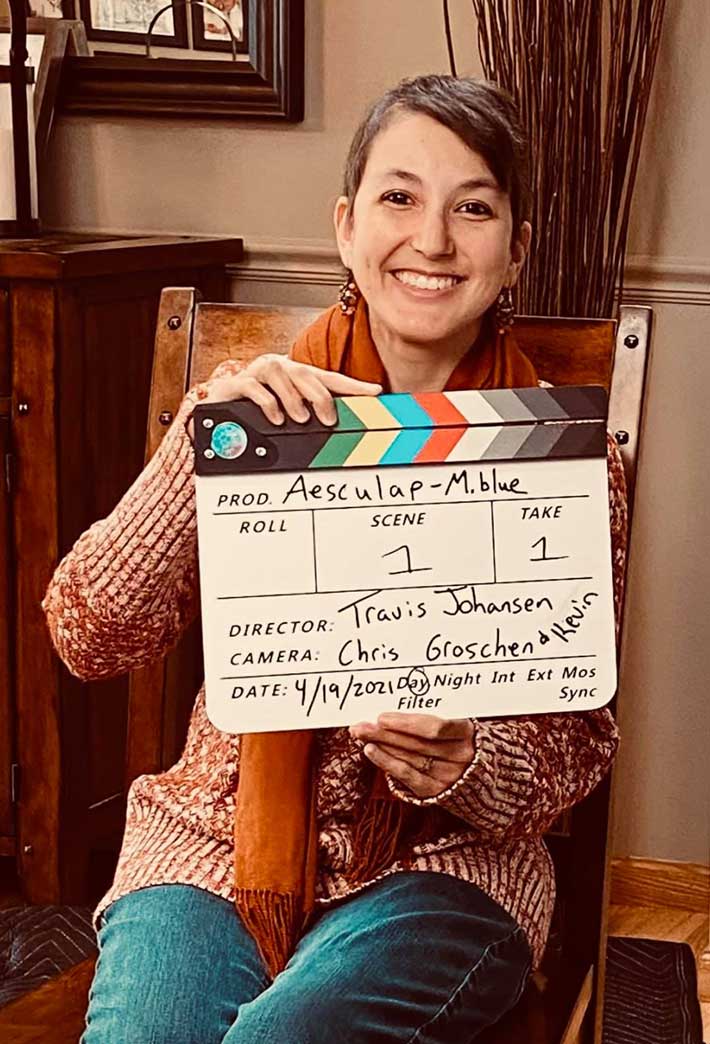
Maccoux’s brother-in-law is friends with a Birdies4Brains board member, which is how she found out about the tournament and the grants it supplies. Maccoux, and another sister, Traci, who has multiple sclerosis, both applied and received grants from Birdies4Brains. The Maccouxs are among the 80 or so families that have been directly impacted by the foundation.
Just as Birdies4Brains helped Maccoux, she’s now helping others, too. She loves public speaking and graduated in May 2019 with a communications degree from Augsburg University, a private school in Minneapolis (her neurosurgeon was among the attendees). She’s devoting her life to advocating, educating and fundraising. She’s extremely active in the Hydrocephalus Association and through it was able to speak at a Hollywood fundraiser headlined by Conan O’Brien, in which she helped raise $300,000 for hydrocephalus research. Just this month she spoke at a nearby HopeKids golf tournament, an organization that provides tickets, events and activities for children with life-threatening medical conditions.
“I want to use my experiences to educate and advocate for people who go through similar things,” she said. “I will speak and do whatever I can to help anyone who has the same or familiar diagnosis or disabilities. That’s kind of my purpose in my life.”
Meet Keller Golf Course
Keller has one of those intercoms booming from the pro shop, where a voice over a crackling background announces who is on the tee and which group is on deck, so right away you know it’s good.
It opened in 1929 and reopened in 2014 after a Richard Mandell renovation. In the time between it hosted the St. Paul Open, two PGA Championships (1932 and 1954), the 1949 Western Open (won by Sam Snead) and the LPGA Tour’s Patty Berg Classic. Berg, Snead, Jack Nicklaus, Arnold Palmer, etc., have all played there. It’s $47 to walk 18 holes and the place is packed all summer long.
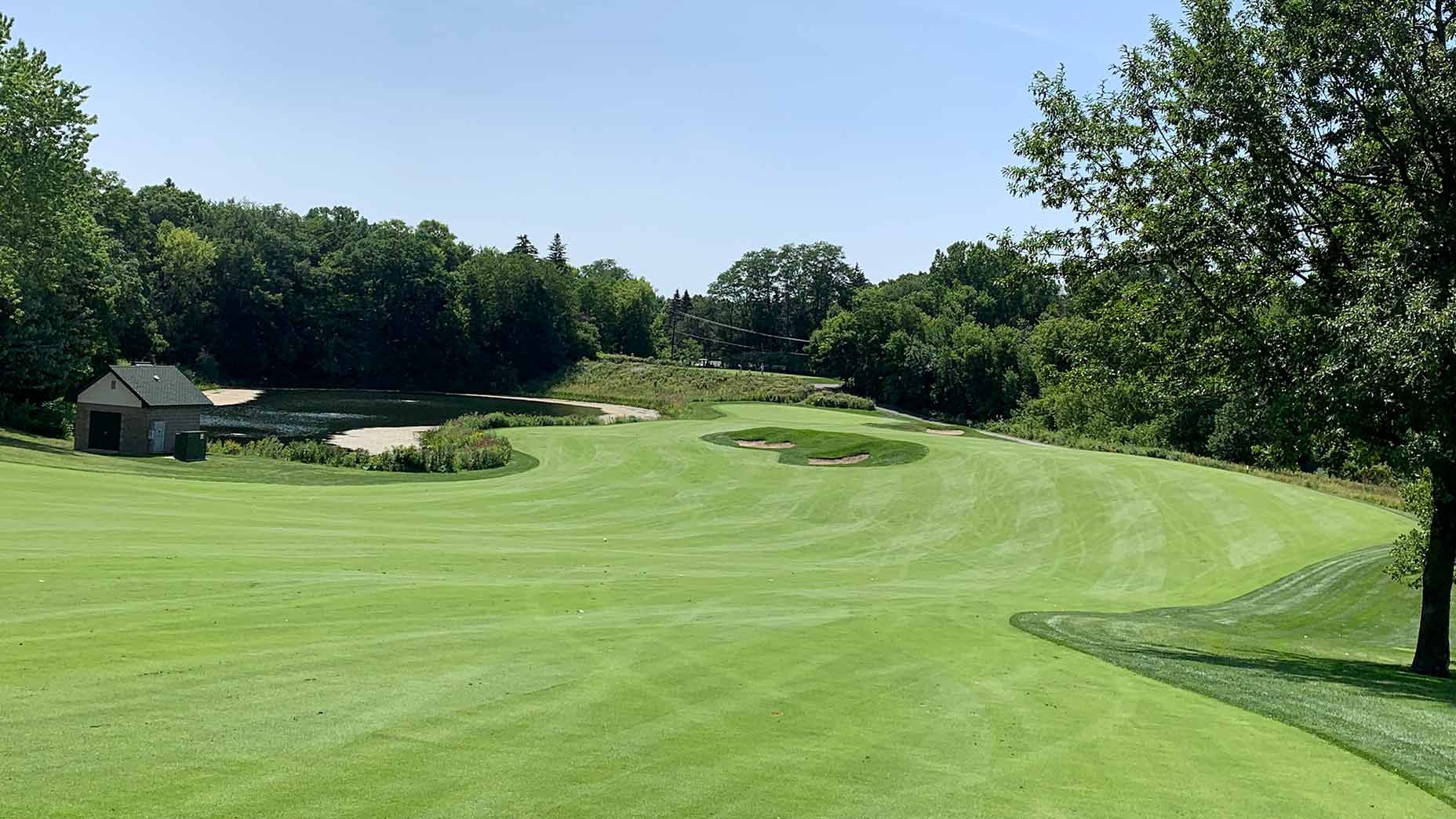
Keller is well-conditioned, playable and strategic and boasts fantastic terrain that rolls through the property and influences several shots and holes. There are also two pesky trees on holes 4 and 17 that are always conversion-starters, but I like quirk, so you won’t hear me say anything bad about them in this space.
When you play a course 5 1/2 times, it’s easy to unlock your favorite holes. The par-5s are great, with the par-5 10th being the best of the bunch. I made four pars, a bogey and a double on it, and sadly that second par (during my second round) came via a three-putt. A good drive gives you an opportunity to reach the green in two, and the green and surrounding area is receptive enough to encourage that option while also dangling just enough trouble with bunkers and tightly mown run-off areas.
My favorite stretch was Nos. 12-13-14. The 12th is another gettable par-5, the 13th is a blind uphill par-3 over a marsh, and the 14th is a short dogleg right with a wild undulating fairway that leaves an approach to an uphill green.
If you’re in the area, play the course. It’s worth your time.

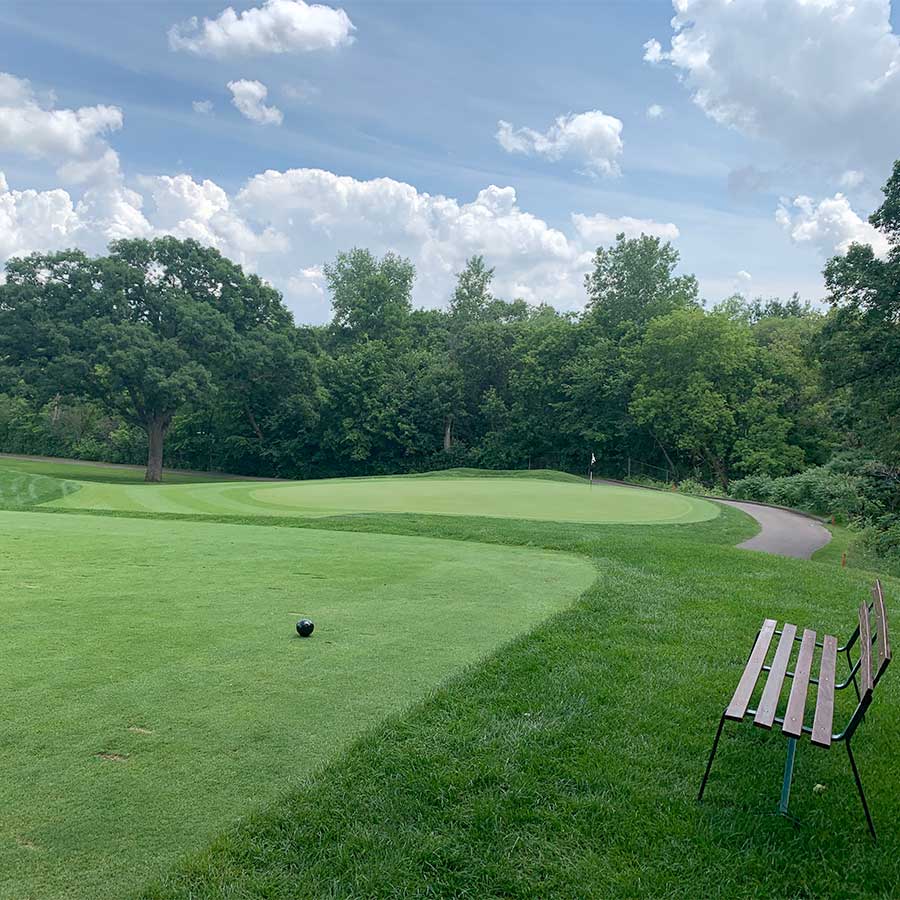
Meet the field
I entered this fundraiser knowing just two other people, but the format is conducive to making friends. Your group switches after each of the first three rounds, and you play the final 46 holes with your fourth group of the day.
In Round 1 I played with Brian, the tournament founder, and Andy, who hadn’t played golf yet this year but decided playing 100 holes a day to kick off his season was a good idea. He played well until he announced he was playing well, and then he didn’t play as well. In Round 2 I met Nick and Jonathan, who are neighbors in a Twin Cities suburb. “You wanna play a putting game?” they asked me, a terrible putter, on the first tee box. Probably not a smart idea for me. I should have said no. “Yes,” I answered immediately.
What we played was what they called “Wads,” as in wads of cash. The rules are simple. If your first putt on any green is longer than the length of your putter, and you make it, a wad goes into the pot. The last person to make a wad putt wins the pot, regardless of how many makes they contributed during the round. To spice things up, the leader even got to wear a gaudy money chain necklace. We had a blast. (Jonathan took the pot but refused my money.)
Just when I was getting comfortable with the yardages and shots from the white tees, my Round 3 companions, Dan and Pat, wanted to play the back tees, which were about 6,700 yards. I obliged — because you never want to be that guy anyway — and promptly made a 10 on the first hole. I’m sure they were thrilled. But I turned my game around and shot a decent score (well, it would have been without the 10). Dan and Pat had a long-running game in which they traded silver bullions for birdies made, and each maddening miss was met with excruciating agony. My final group was Chris and Ben. Chris racked up birdies and said this was his favorite day of the year, and I’m pretty sure Ben was the nicest guy I’d ever met in my life.
Golf with good company is hard to beat.
Random golf course musings
— It took me seven holes to realize I had no time to mind my bag’s club dividers and 10 to completely give up on headcovers.
— My shoes and socks were officially soaked from the dew after 11 holes.
— My first lost ball came on the 12th hole, when I pulled my drive left off the tee and couldn’t find it in the long stuff. Double bogey. My first three-putt came on the par-5 10th in Round 2, my 22nd hole overall. Tough way to make a par. My first triple bogey was on hole 29, and my first really bad shot was on hole 35, a bladed wedge that led to a bogey. My first really tired feeling of Man, this is gonna be a long day! came on the green of my 33rd hole. My first sunscreen application — very important! — came at 8:20 a.m. and was repeated no fewer than three more times. My first adult beverage — a 16 ounce Summer Shandy — came on hole 47. (Don’t worry, we didn’t overindulge. I had work to do.)
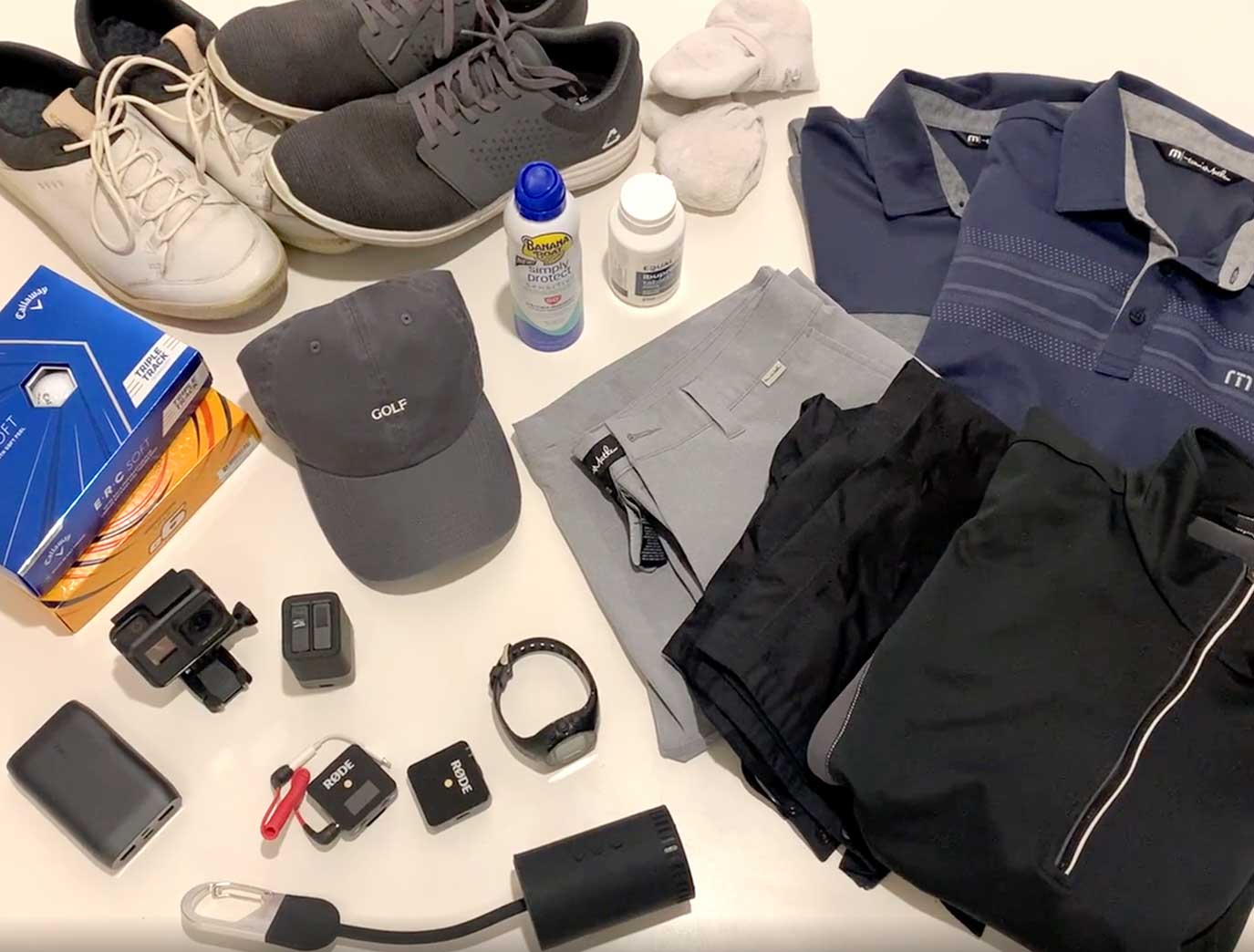
— It’s no fun losing golf balls and taking penalty strokes for decent shots that are clearly findable. But when you play 100 holes in one day, even the allotted three minutes to look for a ball is too much time spent. A solution? Hit more fairways.
— Playing golf in your own cart (with only your ball to drive to) is the best.
— Over 100 holes, the speeds of greens can change a lot. The first 1 1/2 rounds were played on slower dewey greens, holes 25-35 were played on a mix of dewey vs. mowed surfaces, a dozen in the middle were met with spongy rain-soaked greens, while the end of the day was mostly dried out and back to normal. Putting is hard enough as it is.
— Another discovery: After hitting your tee shot on the par-4 14th hole, you can get your cart going really fast — like, really fast — plunging down the winding steep hill that leads to the fairway. So speedy, in fact, that they should put a sign there. Turns out they did, which I didn’t notice the first time I played the hole. I slowed down one time when slaloming the decline during the rain, but I couldn’t resist the others. I’m sorry to disobey the warning, but come on, even Old Tom Morris himself would have taken this thing on with reckless abandon.
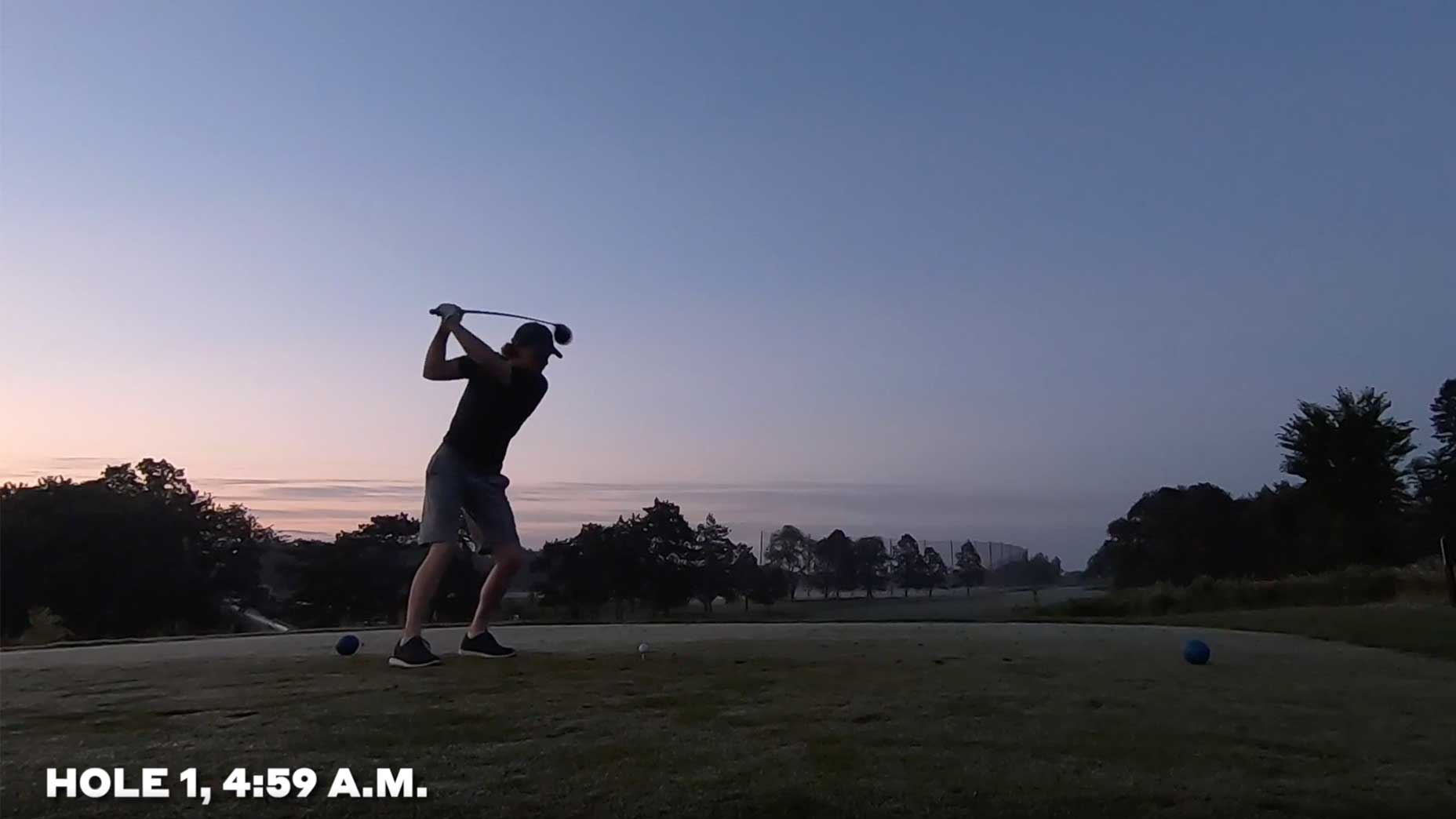
— I held off until the 44th hole to listen to music, which is when I finally turned on my Puma Soundchuck Mini. The Grateful Dead’s “Fire on the Mountain,” Live at Barton Hall at Cornell University from May 8, 1977 (2017 remaster!) is 15 minutes, 9 seconds long. I played three entire holes before the song had finished (par-bogey-par).
— My first back pain came on hole 56. It didn’t just hurt in one spot. It was everywhere. That also led to the first dose of Ibuprofen.
— My longest putt of the day came on hole 60, No. 14, a 60-foot bomb for par from the fringe after a drive into a hazard and approach that ran just off the green. I made the putt, threw my arms out to the side and trotted around the green like an airplane. In hindsight, my biggest regret of the day might be the celebration.
— Swing fatigue started to rear its head in Round 4. On holes 60, 61 and 62 I had lazy, hard pulls off the tee. I could feel my body starting to give up. My worst swing of the day, which felt like I was making a cut with a life jacket on, came via a 7-iron on the par-3 15th, my 88th of the day. I could almost hear bones cracking as I thinned one left of the green.
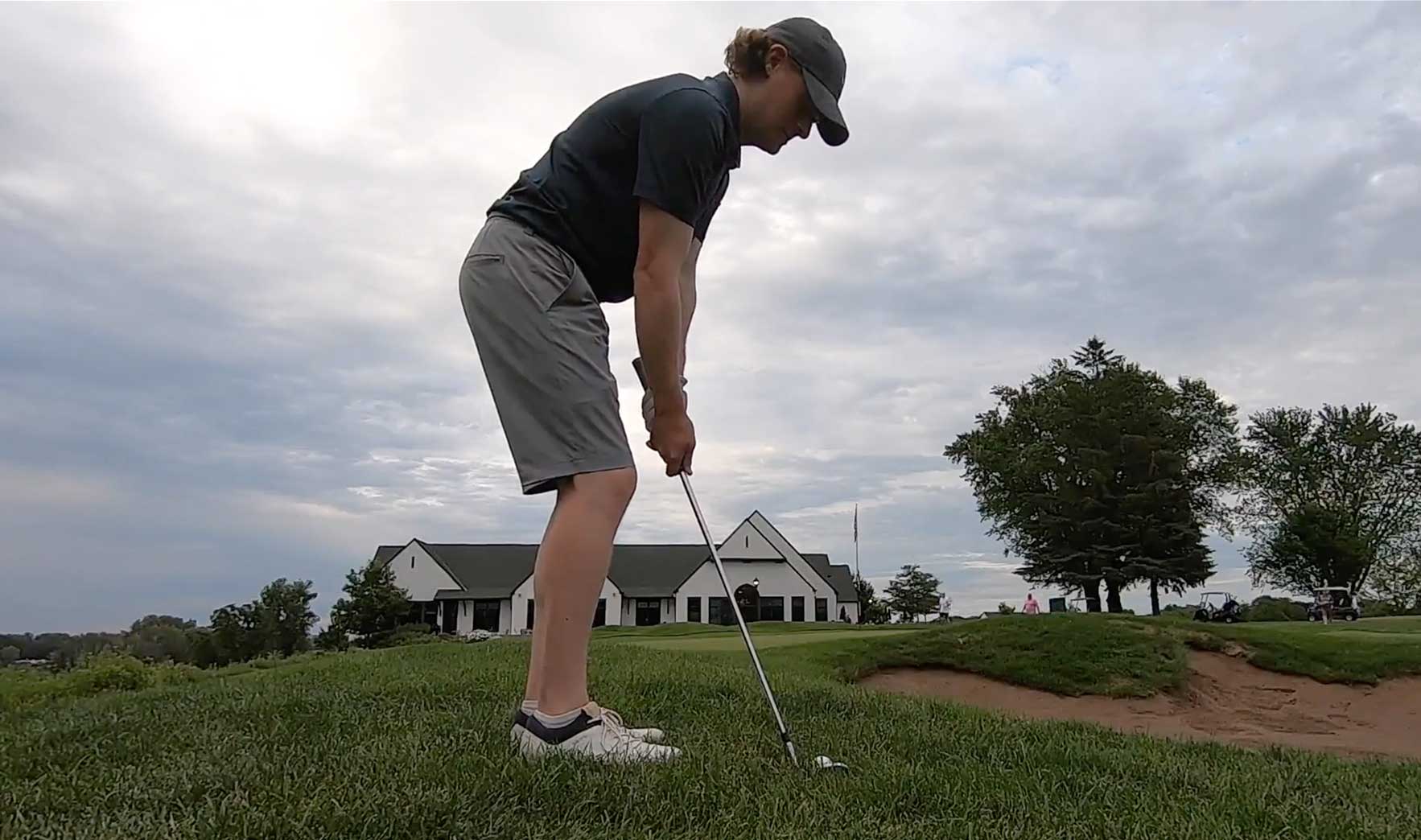
— My first birdie came on hole 89. (Yes, it sadly took THAT long.) Playing the par-5 16th, I went driver-hybrid and two-putted. On the 98th hole, that same par-5 16th, I had an identical second shot and chunked it, splattering mud on my face. What a sport.
— My second birdie came on the 95th hole, the par-3 13th where I had about 2 feet left for my tap-in. Easy game!
— On the 98th hole I bladed a wedge dangerously close to the clubhouse.
— On hole 100, the par-4 18th, I made a 12-footer for par. Sadly it was among the longest putts I made all day.
— It was a fantastic experience, a brilliant cause and some of the most fun I’ve ever had on a golf course. Our group raised over $70,000 for the event, and my fundraising total was $3,830, half of which came from my employer — thanks, GOLF! — matching what I had raised.
— Bring on the ice bath.
The numbers
Round 1: 44-45—89 / 5 a.m.-7:06 a.m. (2 hours, 6 minutes)
Round 2: 46-43—89 / 7:45 a.m.-9:56 a.m. (2 hours, 11 minutes)
Round 3: 48-47—95 / 10:15 a.m.-12:15 p.m. (2 hours, 0 minutes)
Round 4: 49-48—97 / 12:57 p.m.-4:08 p.m. (2 hours, 18 minutes)*
Round 5: 44-43—87 / 4:10 p.m.-6:14 p.m. (2 hours, 4 minutes)
Round 6: 49 (10 holes) / 6:17 p.m.-7:32 p.m. (1 hour, 15 minutes)
*Rain delay from 2:04 p.m. to 2:57 p.m.
The damage
Birdies: 2
Pars: 24
Bogeys: 46
Double bogeys: 25
Triple bogeys: 2
Other: 1
Best hole: par-3 13th, 1 over thru 6
Worst hole: par-4 9th, 10 over thru 5
Most consistent holes: par-4 11th and par-3 15th, five bogeys/1 double bogey (both)


